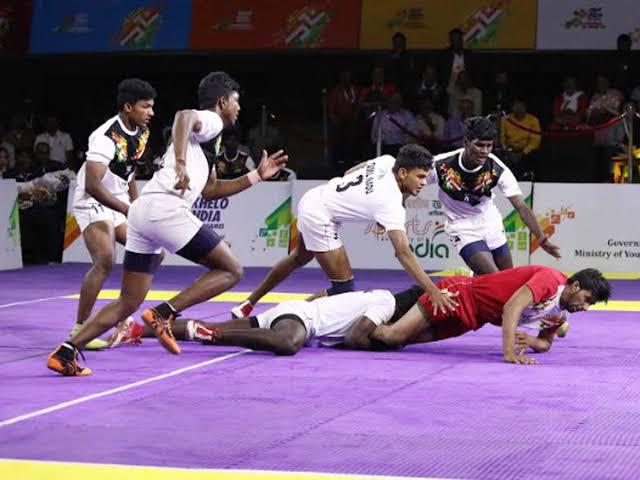
Summary
In Boxing, the beauty of outboxing lies in its precision and adaptability. It’s the art of dictating distance, tempo, and rhythm while forcing your opponent to fight your fight. But mastering outboxing goes beyond just having good footwork and a sharp jab; it’s about understanding how to use those tools differently depending on who’s standing in front of you.
Whether you’re facing a relentless pressure fighter or a patient counterpuncher, these advanced strategies will help you stay composed, control space, and win rounds with intelligence, not brute force.
Once you understand the fundamentals of the outboxing style, the next step is learning how to apply it against different types of opponents. This guide breaks down advanced outboxing strategies to help you outthink and outmaneuver different fighters inside the ring.
1) Control Space And Reset Often Against Pressure Fighters
Pressure fighters thrive on chaos. They want to close the distance, trade punches, and overwhelm you with aggression. The key to neutralizing them is space management.
Use your jab constantly, not just to land, but to disrupt their rhythm. Step laterally instead of backward to avoid being cornered. Every time they step forward, pivot out, and make them reset. The more they chase, the more they tire.
Pro Tip: Target the body with quick jabs or straight punches. Body shots slow down forward momentum and make pressure fighters hesitant to rush in.
2) Dictate The Tempo When Facing Counterpunchers
Counterpunchers rely on timing; they often wait for you to make the first move. To beat them, you must break their rhythm and control the pace of engagement.
Use feints to draw reactions and half-steps to bait counters without committing. Throw short, sharp combinations (like jab-cross or jab-hook) and finish by stepping off at an angle. Don’t give them a clean target or predictable pattern.
Pro Tip: Double up on your jab. The first jab forces a defensive reaction, while the second often lands clean before they can counter.
3) Stay Composed And Pick Your Shots Against The Brawlers
Brawlers rely on emotion and power. They swing big, take risks, and try to drag you into exchanges. Your advantage as an outboxer is composure. Stay calm, stay long, and punish their mistakes.
Keep your punches straight and crisp; brawlers often throw wide, leaving openings down the middle. As they overcommit, slip or pivot out, and tag them with clean counters. Over time, frustration will cause them to tire and swing wildly.
Pro Tip: Never match volume with a brawler. Match accuracy. One well-timed jab or straight right can score cleaner and more effectively than their flurry.
4) Use Angles And Level Changes On Taller Opponents
When facing a taller boxer, fighting from the outside might not work to your advantage. Instead, control angles and attack from positions where their reach is less effective.
Move your head as you close the distance and attack the body to break their stance. Short bursts followed by pivots work best. The key is to enter on your terms and exit before they can reset.
Pro Tip: Use diagonal footwork, step slightly to the side as you jab to create openings for follow-up punches. This keeps you off the centerline and makes it harder for them to line up their reach.
5) Maintain Your Distance Against Shorter Opponents
Shorter fighters often try to slip under your punches and come inside. Your job is to guard your range and never let them get close enough to exchange comfortably.
Use your jab like a wall, snap it out, circle away, and pivot whenever they lunge forward. Keep your punches straight and consistent. The goal is to frustrate them until they lose patience and start making mistakes.
Pro Tip: Mix in uppercuts or check hooks as they step in. This stops their forward momentum and reinforces your control over distance.
Key Tactical Principles For All Opponents
- Feints Win Fights: Outboxers who master feints can control reactions without throwing.
- Angles Over Retreats: Always step laterally, not straight back. It resets your defense and keeps you on the offense.
- Pace Control: Outboxers don’t just move fast, they change speeds. Use tempo changes to disrupt rhythm.
- Energy Efficiency: Move with purpose. Every step, jab, and pivot should conserve energy and maintain balance.
FAQs On Outboxing Strategies
Q: How Is Outboxing Different From Counterpunching?
A: Outboxing focuses on maintaining distance and control through movement and jabs, while counterpunching relies on waiting for openings after the opponent attacks.
Q: What’s The Most Important Skill For An Outboxer?
A: Footwork. It determines positioning, balance, and control, the foundation of all outboxing strategies.
Q: Can Short Fighters Be Successful Outboxers?
A: Of course. With sharp timing, lateral movement, and body targeting, shorter boxers can outbox taller opponents effectively.
Q: How Do You Stay Calm When Pressured?
A: Control your breathing, trust your defense, and focus on small movements instead of big escapes. Staying composed allows you to see openings clearly.
Q: How Can I Improve My Outboxing Style In Sparring?
A: Set specific goals for each round: maintain range, work the jab, or angle out after every combo. Focus on rhythm and balance rather than volume.
Final Thoughts
Outboxing is the art of control, space, rhythm, and emotion. It’s not about running away; it’s about dictating every moment of the fight with intelligence and precision.
Learning to adapt your outboxing style to different opponents sharpens your instincts and deepens your understanding of boxing as a mental game. Over time, you’ll learn that the smartest boxer isn’t always the one who hits the hardest, but the one who makes their opponent play by their rules.
You may also like:
6 Easy Southpaw Combinations Every Beginner Should Know
Summary Footwork is one of the most important yet overlooked aspects of boxing. It determines balance, defense, and the ability to create openings. Two common types of movement used by boxers are parallel and diagonal…
Summary In boxing, stance shapes strategy. Southpaw fighters, those who lead with their right hand and right foot, often appear awkward to their orthodox opponents. Because most boxers are orthodox, the southpaw stance instantly changes…
Summary In boxing, training equipment shapes how a fighter learns and develops. While heavy bags and focus mitts are staples in most gyms, the punch shield has become a favorite among coaches for developing raw…
Summary In the world of boxing, the southpaw stance has always carried an air of mystery. With their right hand and right foot forward, southpaws present a mirror image to most orthodox fighters, forcing opponents…
Summary In boxing, small details often make the biggest difference. While the jab is the most basic and frequently used punch, modern fighters continue to refine it with new techniques and timing. One of the…
Summary The speed bag is one of the most iconic tools in boxing gyms, but it’s often misunderstood. More than just a flashy skill, it develops rhythm, timing, hand-eye coordination, and endurance, which are all…
Summary Over the last few years, a remarkable shift has been happening in the world of television and fitness. Reality competition shows built around extreme physical challenges are no longer niche, they’re becoming mass-market phenomena….
Summary In today’s world, rest often feels like a luxury. Between work, personal commitments, and social expectations, many people find themselves running on autopilot. Over time, this leads to burnout; a state of emotional exhaustion,…
Summary The clinch is one of the most dominant positions in Muay Thai, and knowing how to sweep from it can completely change the flow of a fight. A clinch sweep allows you to off-balance…
Summary Osoto Gari, meaning “major outer reap” in Japanese, is one of the most effective and widely used throws in grappling. Originally from Judo, it has become a staple in Brazilian Jiu-Jitsu because of its…
Summary Every Brazilian Jiu-Jitsu practitioner eventually finds themselves caught in an armbar. It’s one of the most common submissions in the art. While the best defense is prevention, knowing how to escape when it happens…
Summary As parents, choosing the right physical activity for your child can feel overwhelming. Between soccer, basketball, and swimming, there’s no shortage of options, but martial arts continue to stand out as one of the…


![[WATCH] IND vs SA 2025: Umpire Rohan Pandit down in pain as Sanju Samson drive hits knee](https://www.babu88sports.com/wp-content/uploads/2025/12/watch-ind-vs-sa-2025-umpire-rohan-pandit-down-in-pain-as-sanju-samson-drive-hits-knee-360x180.jpg)






























![[WATCH] IND vs SA 2025: Umpire Rohan Pandit down in pain as Sanju Samson drive hits knee](https://www.babu88sports.com/wp-content/uploads/2025/12/watch-ind-vs-sa-2025-umpire-rohan-pandit-down-in-pain-as-sanju-samson-drive-hits-knee-120x86.jpg)



![[WATCH] IND vs SA 2025: Umpire Rohan Pandit down in pain as Sanju Samson drive hits knee](https://www.babu88sports.com/wp-content/uploads/2025/12/watch-ind-vs-sa-2025-umpire-rohan-pandit-down-in-pain-as-sanju-samson-drive-hits-knee-350x250.jpg)
